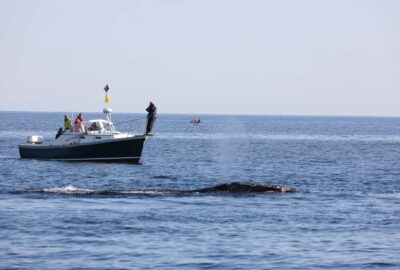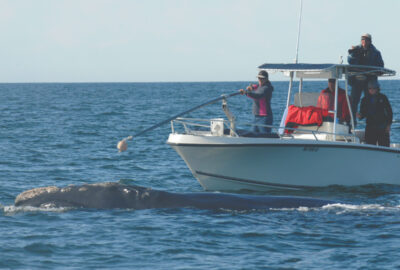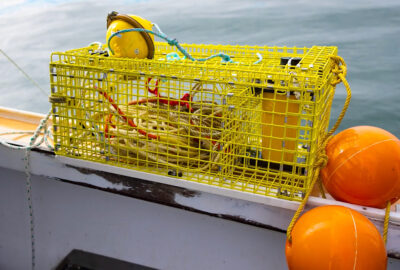Predicting the Birth of a Right Whale Calf
By New England Aquarium on Monday, December 23, 2019

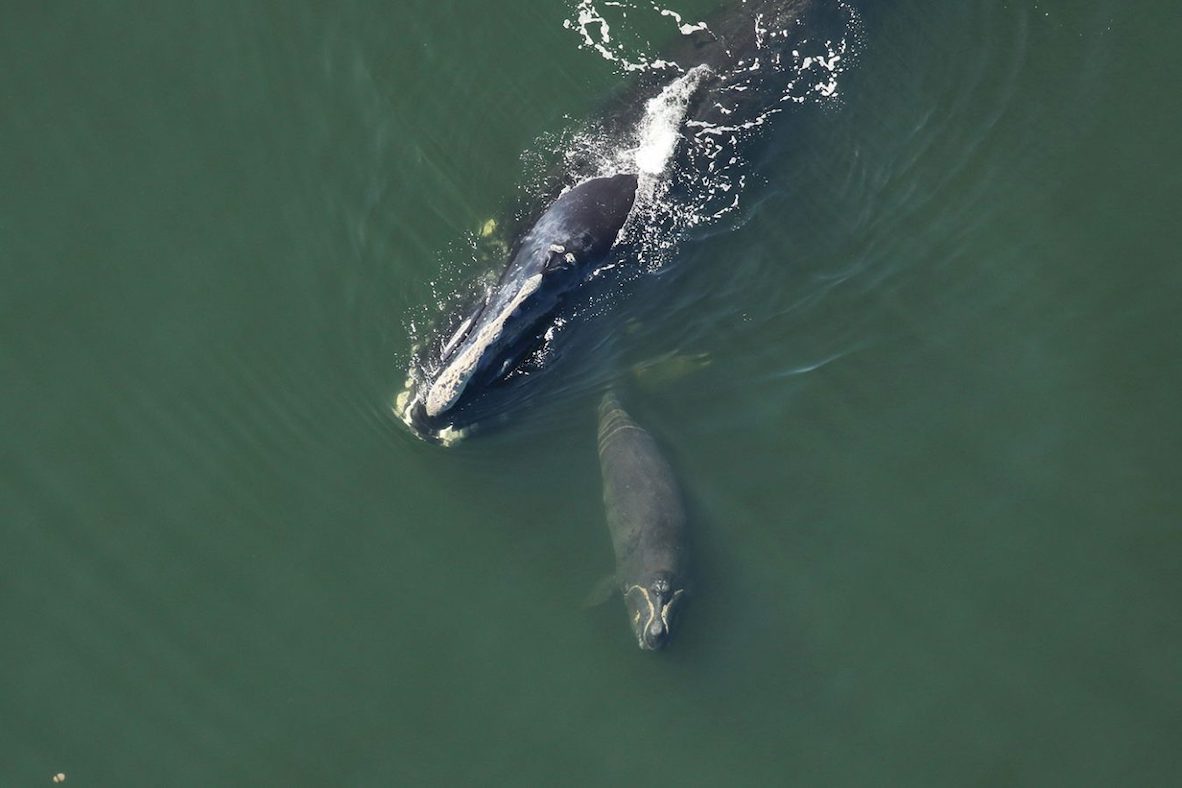
By Katie Graham, Liz Burgess, and Marianna Hagbloom
Bright orange feces found floating at the water’s surface near swimming North Atlantic right whales is a treasure. The Anderson Cabot Center for Ocean Life at the New England Aquarium has a Marine Stress and Ocean Health Program that specializes in studying whale defecations. Yes, you read that right. Whale poop isn’t just waste.
Using specialized laboratory tests, we utilize feces to measure hormones that have been excreted from the body. These tests are similar to what a doctor might use to look at health markers in your blood, but we use feces because it can be collected without disturbing the whales. Our poop expertise is an unusual skillset in marine conservation, and it makes our laboratory (hidden away at the top of the Aquarium) unique and recognized worldwide. For 20 years, we have been scooping poop from the ocean and using it to identify vital hormone signals, including pregnancy diagnosis, reproductive activity, stress, nutritional state, and other important health conditions in right whales. This work represents a rare long-term study and has amassed an unmatched database on changes in right whale health through time.
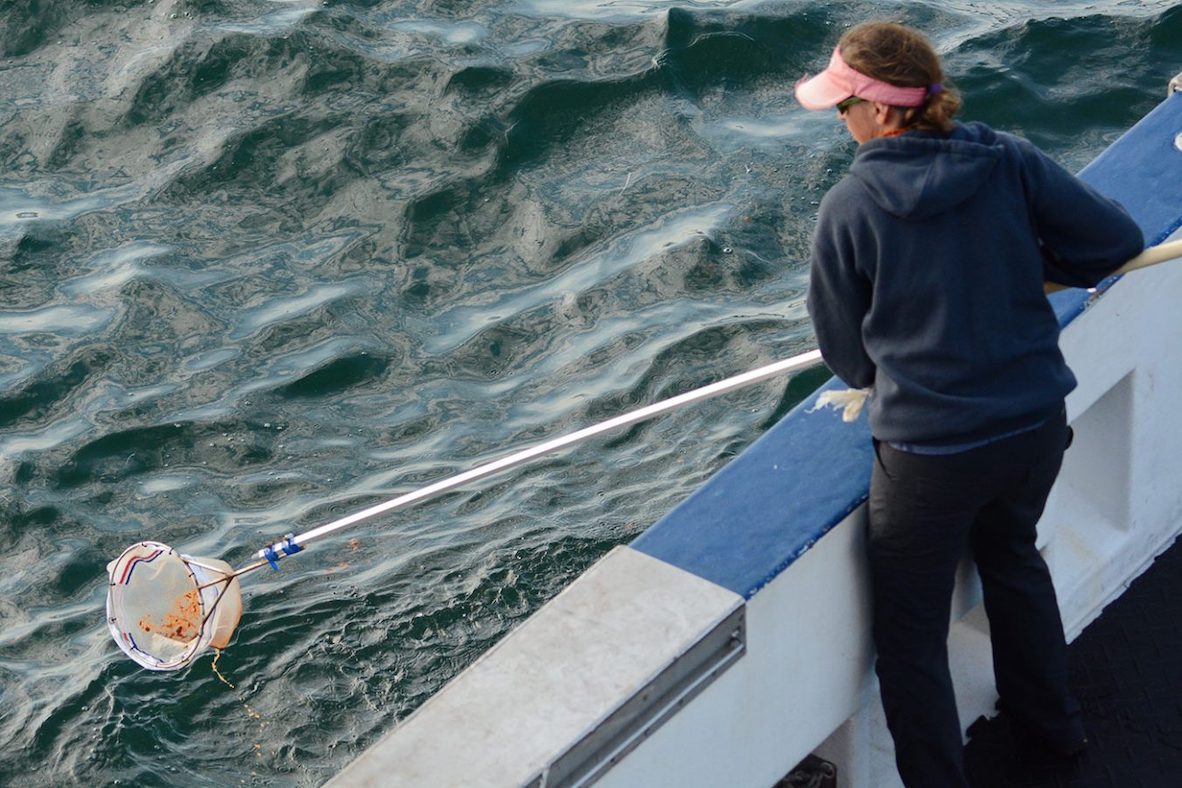
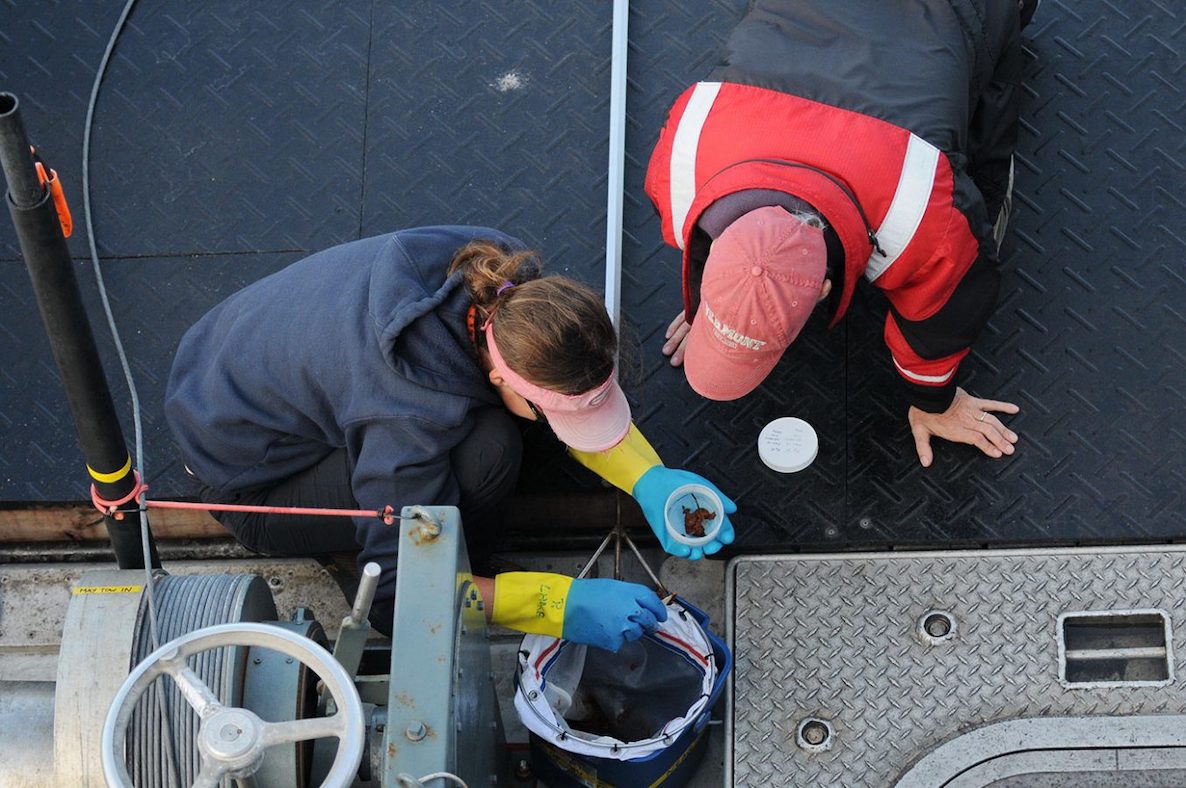
On August 7, 2019, our research team aboard the F/V JD-Martin photographed a right whale named “Harmonia” (Catalog #3101) and two other whales in the Gulf of St. Lawrence. While the day may have not been notable due to the low number of sightings, one sample of poop was collected from Harmonia. Fast forward to this week: while analyzing the four fecal samples our team collected this summer, we had an extremely exciting result! We discovered elevated levels of reproductive hormones (such as progesterone and estrogens) in Harmonia, suggesting that she is pregnant!
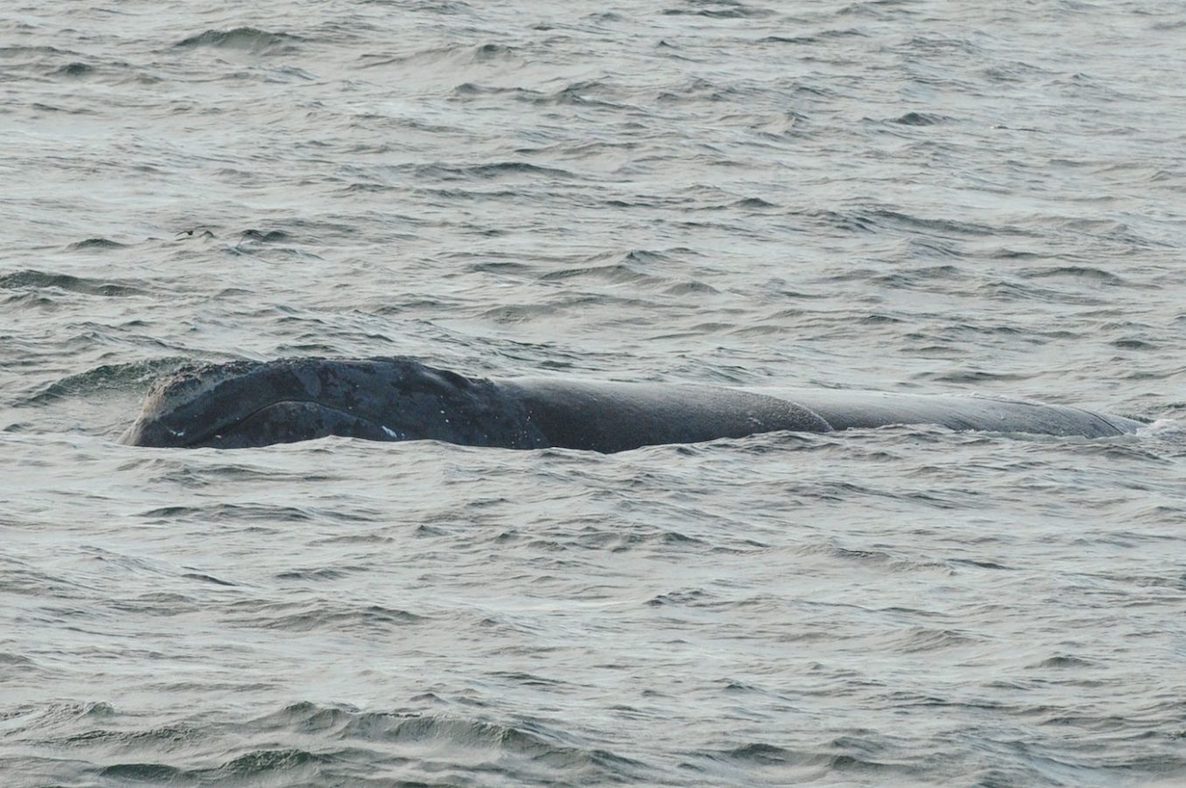
Harmonia is a successfully reproductive female; she gave birth to a calf in 2009 and another in 2016. Tragically, her 2009 calf (#3901) barely made it past its first year before being struck by a vessel, resulting in her death during the summer of 2010. Harmonia‘s 2016 calf (“Gully,” #4601) is still alive, but in 2018 suffered the other major threat to this population: entanglement in fishing gear, which left Gully with severe wounds, including a deep gouge in its head that inspired this whale’s name. This summer, our team was able to document just how awful this wound is.
Interestingly, this is the second pregnancy we have been able to detect in Harmonia. In addition to studying hormones in feces, we were the first to develop methods to quantify hormones in exhaled breath (“blow”) of right whales. In 2015, while this innovative study was in progress, our team collected two blow samples and one poop sample from Harmonia. Those samples also showed levels of reproductive hormones that were characteristic of pregnancy, and she subsequently gave birth 10 months later to Gully! This finding was pivotal for showing that blow (as a novel sample type) is a valid and effective way to understand the reproductive and health status of free-swimming whales.
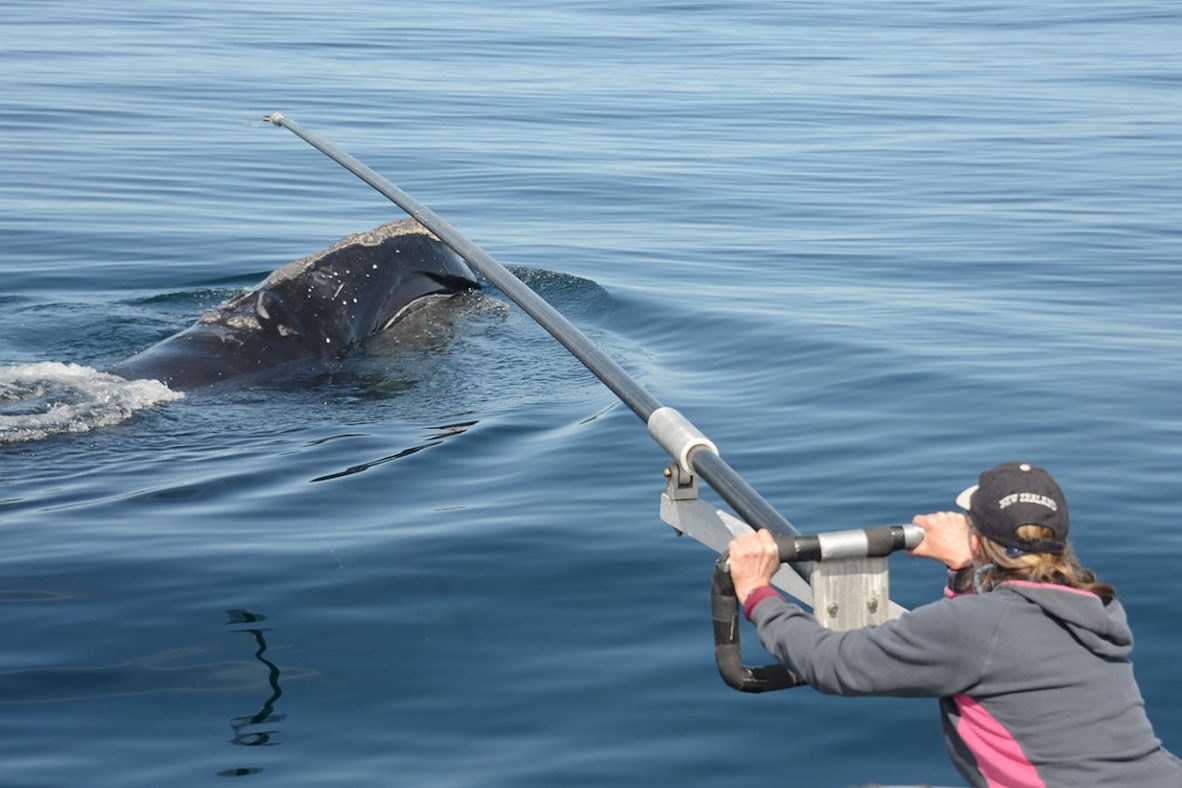

On November 23, Harmonia was seen off the coast of Florida—the first right whale documented in the Southeast this winter. Researchers were excited by the hypothesis that she migrated to the warmer waters to give birth. Now with these hormone results, we are hopeful that her presence there is purposeful, and if all goes well, she will birth a healthy calf this season. She was last seen on December 10 off the coast of Georgia by the Clearwater Marine Aquarium aerial survey team, and we hope the next time they or the Florida FWCC team document her, she will be accompanied by her newest offspring!
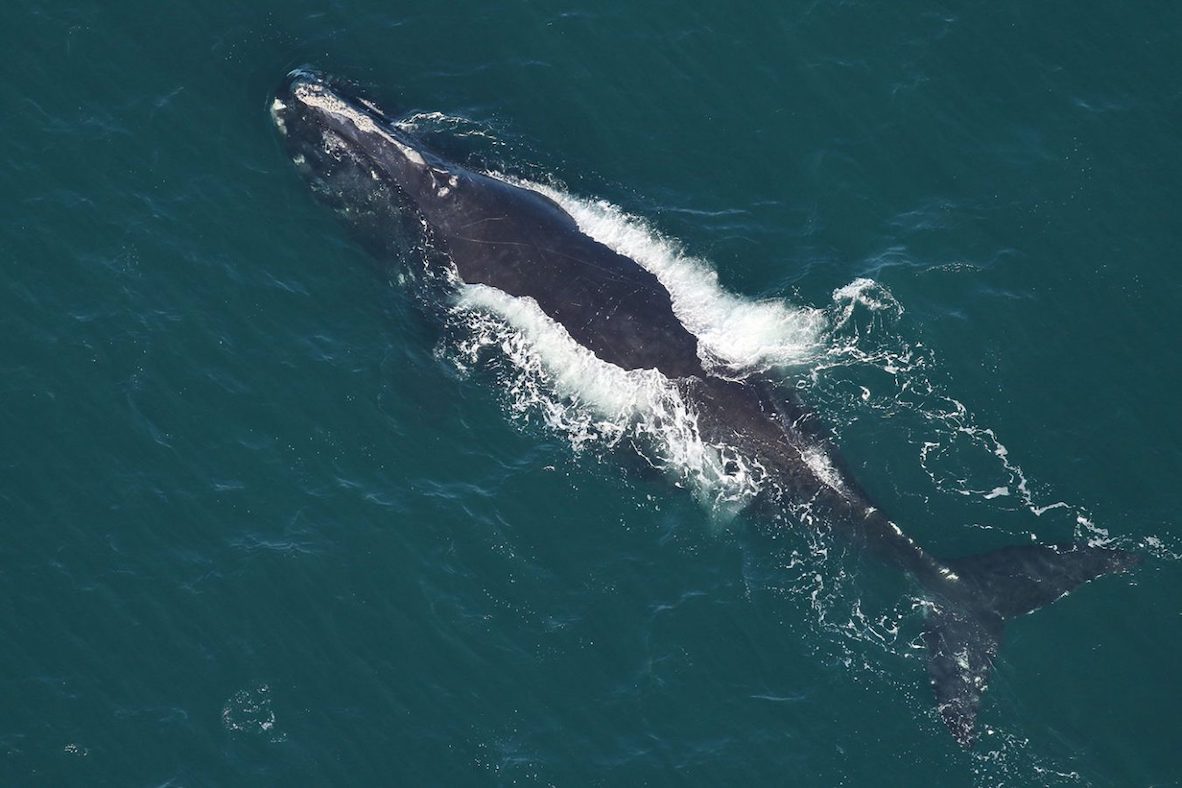
This work is made possible in part by the generosity of Irving Oil, lead sponsor of the New England Aquarium’s North Atlantic Right Whale Research Program.

